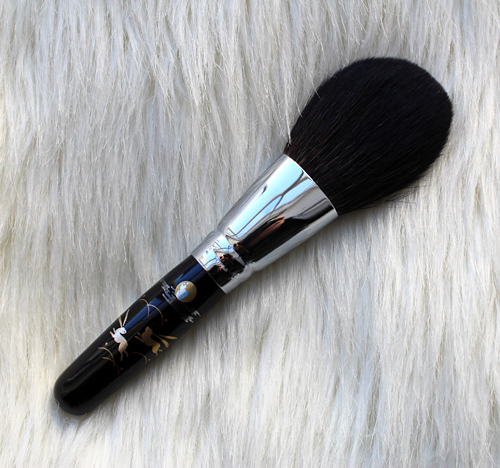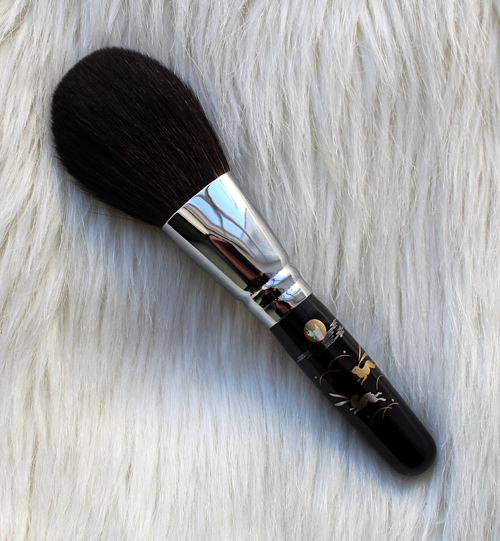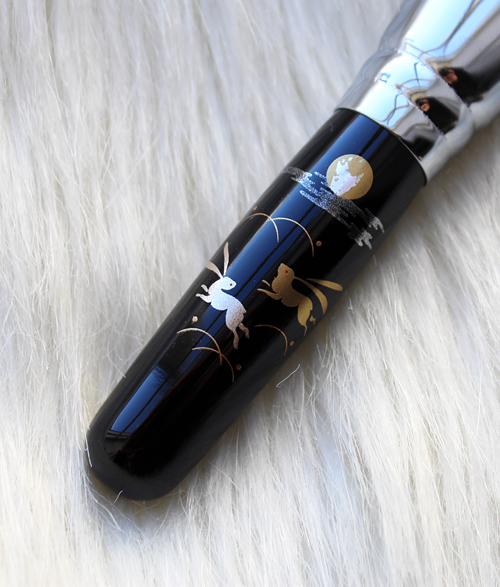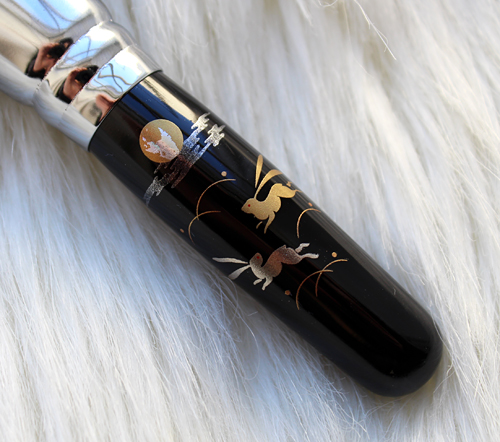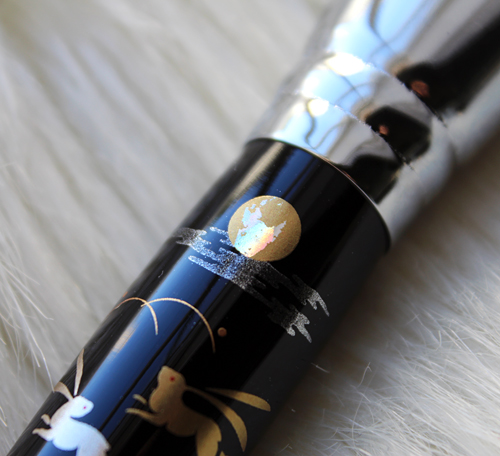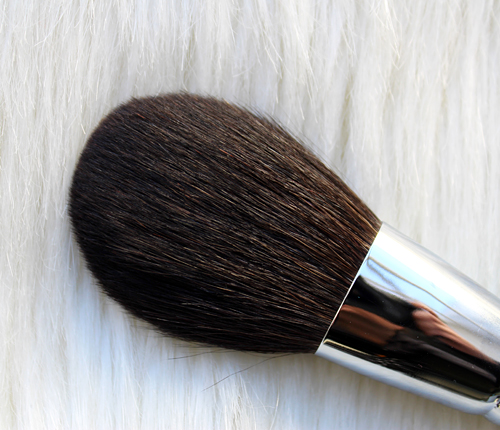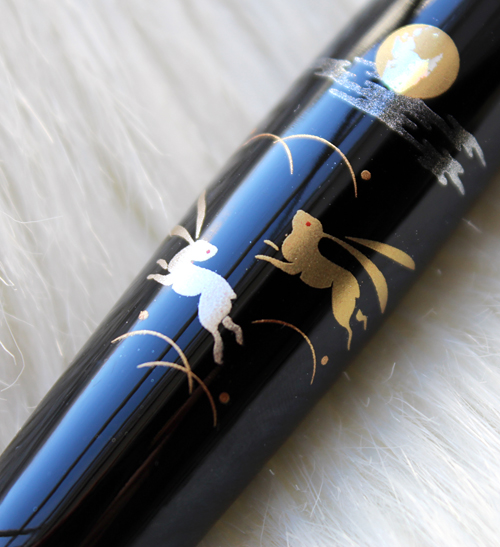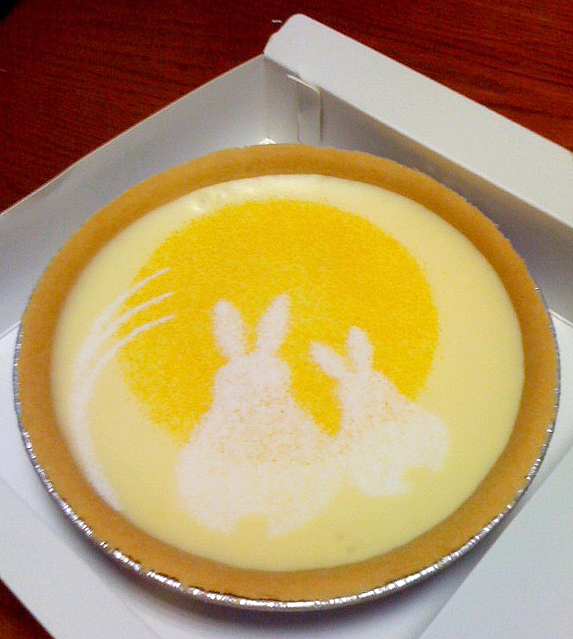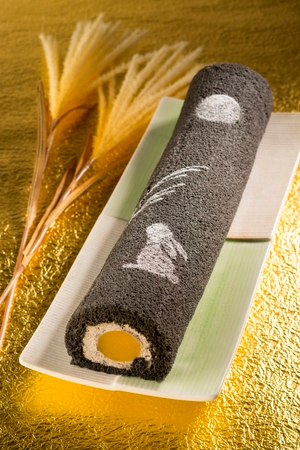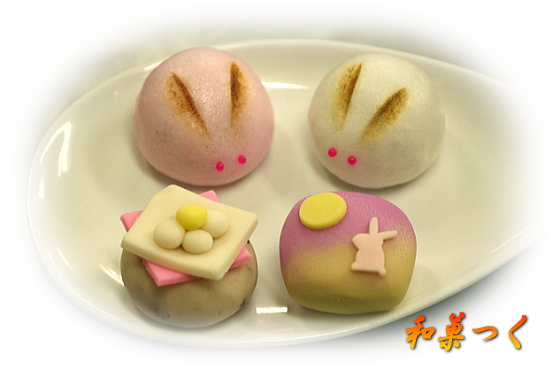This was one of the few acquisitions I actually researched before buying. Not because I didn't love it at first sight but because I wasn't spending $134 on a single item unless I could get a blog post out of it. Fortunately Chikuhodo's Moon Rabbit (Tsuki No Usagi) brush gave me something awesome to write about. The notion of a rabbit on the moon sounds pretty crazy, but as I discovered, the moon rabbit is a fairly big part of culture and history throughout East Asia. I will be focusing on the Japanese version of the story since Chikuhodo is a Japanese brand.
Let's admire the stunning gold and silver design on the handle.
I absolutely adore the iridescence of the moon!
Here's the brush head. If you plan on buying it I can assure you it's just as soft as a bunny itself (although it's actually made from squirrel and goat hair.)
The concept of the moon rabbit has its roots in variety of cultures, most notably Chinese, Aztec and other indigenous American ones. The folklore comes from particular markings that can be seen when the moon is full, which resemble a rabbit using a pestle. More specifically, "The rabbit's head is formed by the Mare Serenitatis (Sea of Serenity); its ears by the Mare Tranquillitatis, the Mare Fecunditatis and the Mare Nectaris (the seas of Tranquility, Fecundity and Nectar); and the body and legs by the Mare Imbrium (the Sea of Showers) and the Oceanus Procellarum (the Ocean of Storms). A small, puffy bunny tail is formed by the Mare Nubium (the Sea of Clouds)."
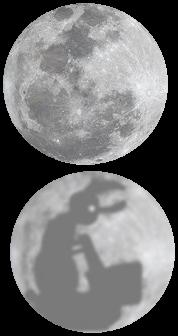
(image from tvtropes.org)
In East Asia, the tale originated in China and spread to other Asian cultures. While in China the rabbit represents a moon goddess pounding the "elixir of life", in Japan the rabbit is making mochi (sweet rice cakes). Here's the Japanese version of the story. "Many years ago, the Old Man of the Moon decided to visit the Earth. He disguised himself as a beggar and asked Fox (Kitsune), Monkey (Saru), and Rabbit (Usagi) for some food. Monkey climbed a tree and brought him some fruit. Fox went to a stream, caught a fish, and brought it back to him. But Rabbit had nothing to offer him but some grass. So he asked the beggar to build a fire. After the beggar started the fire, Rabbit jumped into it and offered himself as a meal for the beggar to eat. Quickly the beggar changed back into the Old Man of the Moon and pulled Rabbit from the fire. He said 'You are most kind, Rabbit, but don't do anything to harm yourself. Since you were the kindest of all to me, I'll take you back to the moon to live with me.' The Old Man carried Rabbit in his arms back to the moon and he is still there to this very day exactly where the Old Man left him. Just look at the moon in the night sky and the rabbit is there!" While no one knows the exact origins of the story, it may be based on a Buddhist fable, or could be a bit of wordplay: "The rabbit pounding mochi is also a play on words…the word mochitsuki describes the act of pounding mochi, while the word mochizuki refers to the full moon."
In any case, it's a charming tale, and one that's heavily ingrained in Japanese culture. Images of rabbits frolicking in the light of the full moon are quite common in Japanese art.
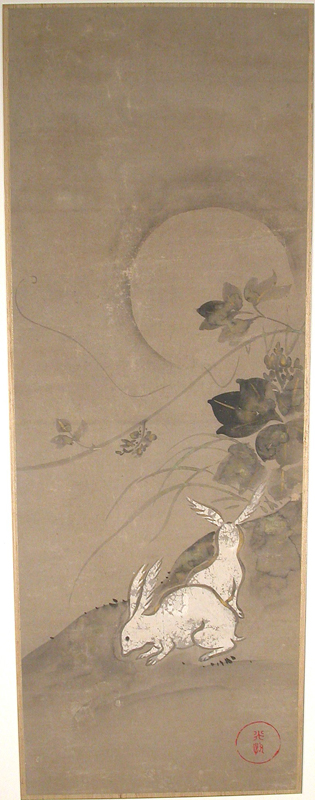
(image from metmuseum.org)
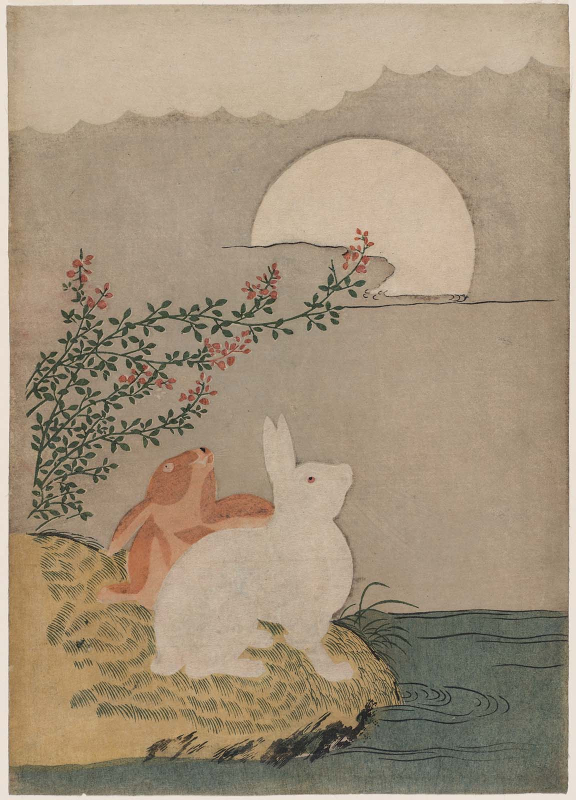 (image from mfa.org)
(image from mfa.org)
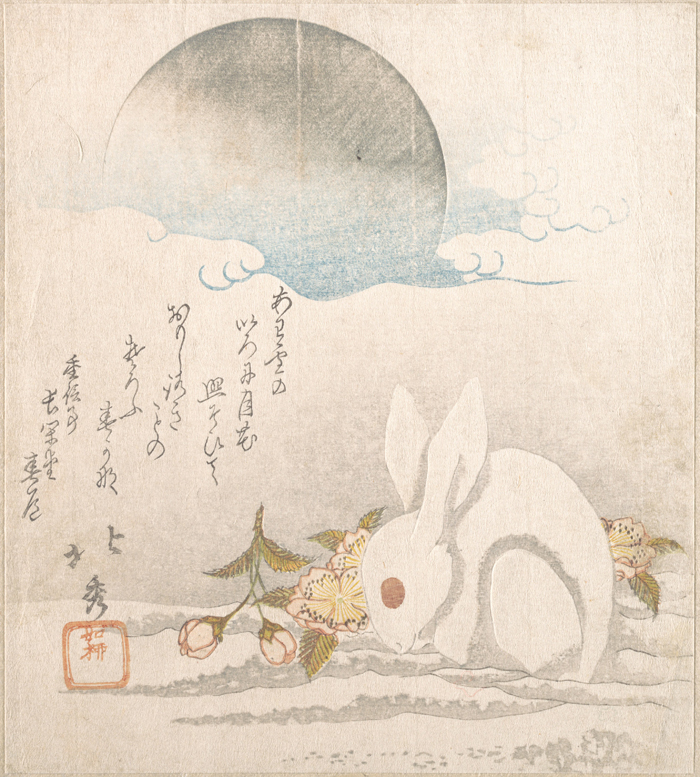
(image from metmuseum.org)
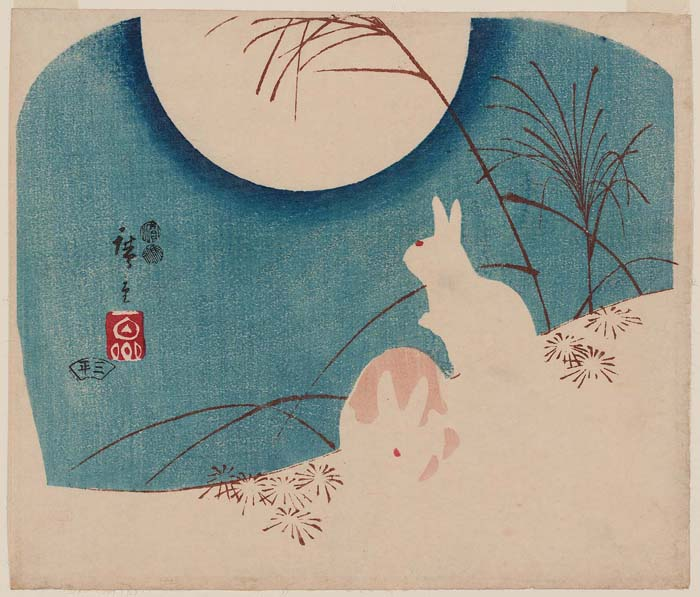 (image from mfa.org)
(image from mfa.org)
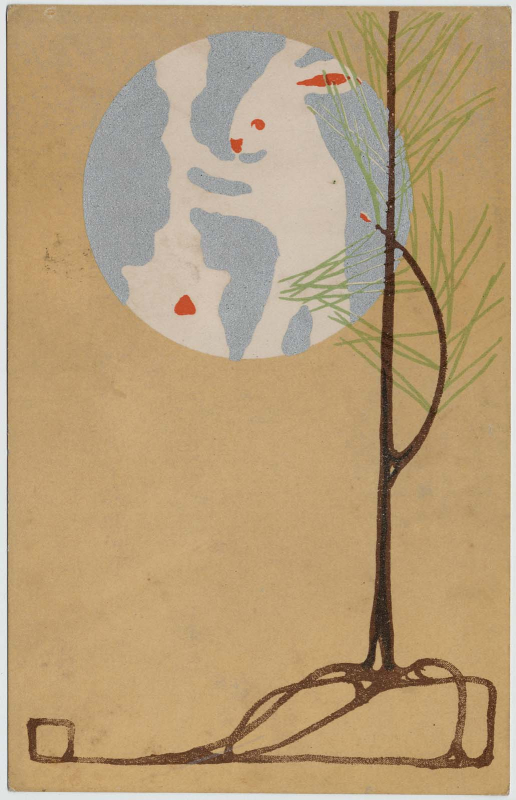
(image from mfa.org)
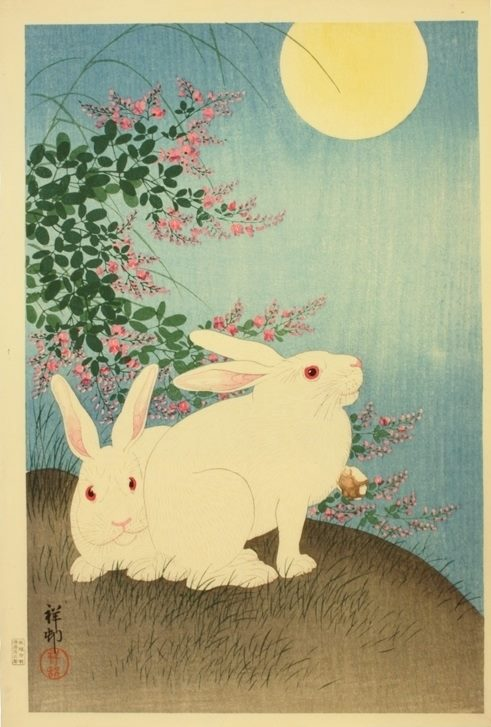
(image from ukiyo-e.org)
Rabbits and the moon are also a common scene for home goods – it seems to be particularly popular for noren (Japanese doorway curtains.)
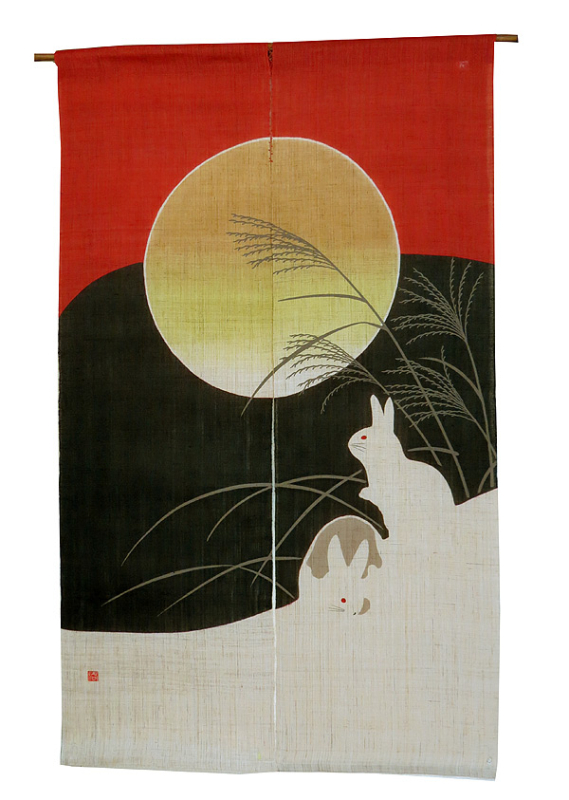
(image from global.rakuten.com)
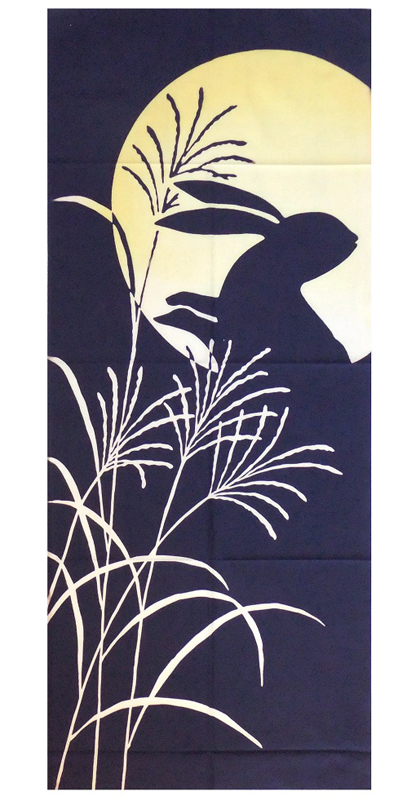
(image from nipponcraft.com)
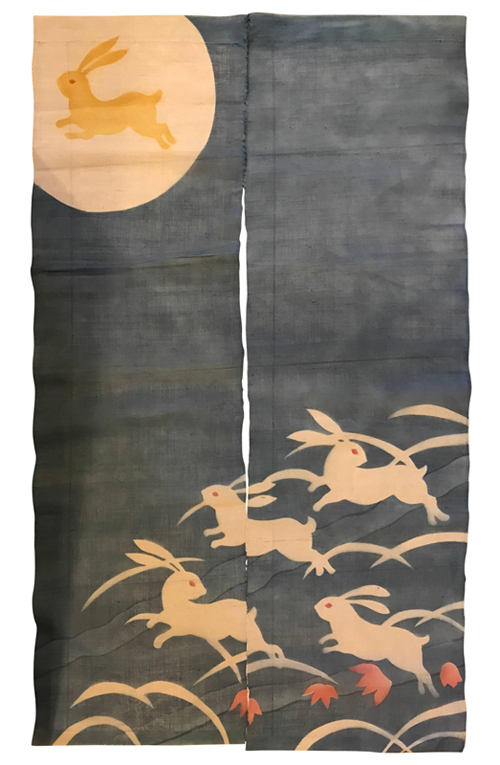
(image from 1stdibs.com)
You can find nearly any household product depicting the moon rabbit, from washi tape and towels to kitchen items.
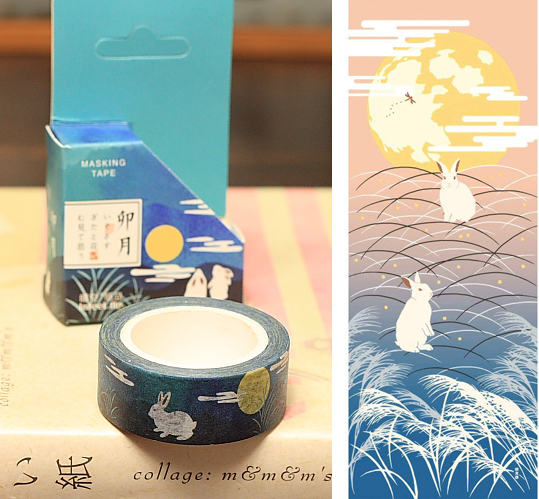
(images from yozocraft and amazon)
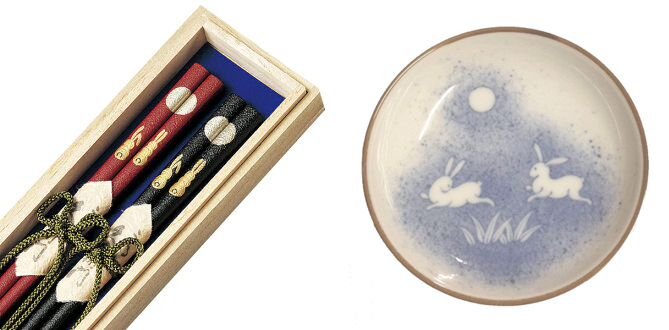
(images from global.rakuten.com and amazon)
Additionally, each fall there are entire festivals throughout Japan to view and celebrate the harvest moon. The moon-viewing, or tsukimi ("tsuki" means moon and "mi" is watch) is held on the 15th day in the evening of the eighth lunar month. These gatherings date all the way to the 9th century and, like the moon rabbit story itself, were introduced by the Chinese. "The O-tsukimi festival began in the Heian era (794 to 1185). During this period, Japanese aristocrats gather themselves and recite poetry under the light of the full moon. In the Japanese lunisolar calendar, this gathering usually falls on the 8th month. They believed that the 8th month is the best month to look at the moon because the positions of the Earth, sun, and moon further illuminate the night sky. Later on, the event is not only centered on poetry reading. Decorations were made. Japanese pampas grass (susuki) was put into place. Tsukimi ryore, sake, and other food were shared by everyone viewing the moon. People who attend the gathering also begin to thank their moon god and pray for another bountiful harvest. Hence, the O-tsukimi festival tradition as we know it today. Even when the moon is not visible or there is rain, O-tsukimi festival is still being held. The Japanese call it Mugetsu (no moon), or Ugetsu (rain moon)."
Little moon-shaped dumplings called dango are made especially for the season. And the pampas grass is so pretty…I'm wondering if the curved lines on the Chikuhodo brush are meant to represent it. I think they could, given the prominence of stylized grass in the art I included above. The grass also symbolizes a bountiful harvest and is believed to ward off evil.
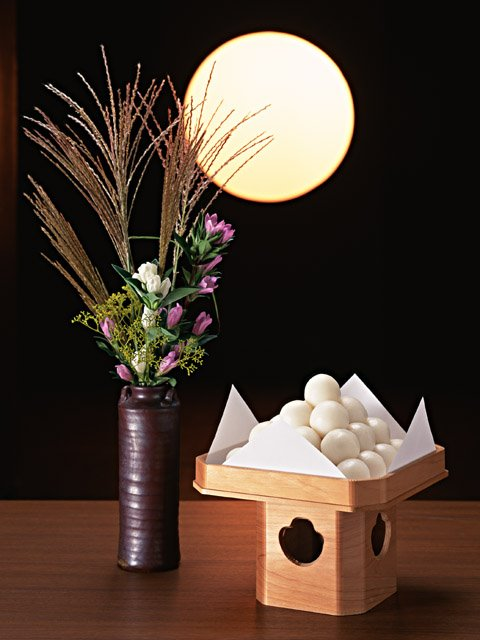
(image from facebook)
I couldn't resist sharing these fairly elaborate bunny-themed treats. Needless to say, if I ever make it to Japan, I will have a tough choice whether to go during spring or fall – the former has fantastic cherry blossom festivals but, as I'm learning, the autumn moon-viewing festivals are amazing too!
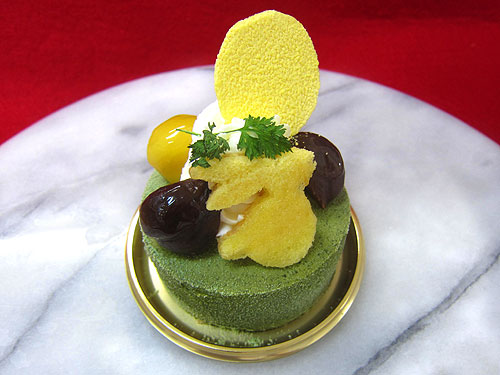
(images from soranews24.com)
In addition to festivals, the moon rabbit story figures prominently in Japanese culture in other ways, most notably in the popular anime Sailor Moon (whose human name is Usagi Tsukino – literally "rabbit of the moon" ) and a rover designed to explore the moon named Hakuto ("white rabbit"). Given all of this I feel fairly embarrassed that I was completely unfamiliar with the moon rabbit story and the festivals and other cultural touchstones associated with it. But at least Chikuhodo provided a beautiful way for me to become aware.
What do you think of this brush? Had you heard of the moon rabbit story before?


